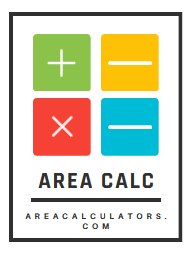Every city, town, or housing project needs a balance — too many homes and it gets crowded; too few and the space feels wasted. That’s why planners and developers turn to one key figure: residential density.
The Residential Density Calculator shows how many housing units exist or can fit in a specific land area. Whether you're a city planner, architect, student, or real estate developer, this tool helps you plan smarter, stay within regulations, and optimize land use.
Let’s break down how it works — and how it keeps communities livable and efficient.
What Is a Residential Density Calculator and Why It Matters?
A Residential Density Calculator is a simple tool used to calculate the number of dwelling units per unit of land area.
It answers questions like:
-
How many homes can fit on this land?
-
Is the current housing density too high or too low?
-
Are we following the city’s zoning rules?
This is essential in:
-
Urban planning
-
Affordable housing strategies
-
Zoning approvals
-
Environmental impact studies
By knowing density, planners can balance population growth, infrastructure capacity, and quality of life.
Basic Formula and Variables (Simplified Table)
Contents [hide]
Here’s the standard formula:
Residential Density = Number of Housing Units ÷ Land Area
Variable Table
| Variable | Explanation |
|---|---|
| Housing Units | Number of homes or apartments in a given area |
| Land Area | Size of the land (usually in acres or hectares) |
| Residential Density | Resulting units per acre/hectare |
Example:
If you have 60 housing units on a 5-acre plot:
60 ÷ 5 = 12 units per acre
That means the residential density is 12 units/acre.
Why Calculating Residential Density Is Crucial
✅ Regulatory Compliance – Most cities set legal limits for density in each zone.
✅ Infrastructure Planning – Helps match the area’s utilities, roads, and services.
✅ Community Balance – Avoids overcrowding or underutilized space.
✅ Environmental Control – High density may need more green space or stormwater systems.
✅ Investment Forecasting – Developers use it to estimate housing capacity and ROI.
Without it, projects can face delays, rejections, or long-term livability issues.
Where This Calculator Is Used in Real Life
-
🏘️ Urban and Regional Planning Departments
-
🏢 Real Estate Development Firms
-
📚 Architecture and Urban Studies Programs
-
🏗️ Zoning & Municipal Offices
-
🧮 Feasibility Studies for Housing Projects
-
🌳 Environmental Impact Assessments
If you’re working on any land-use project, you’ll use this calculation sooner or later.
How to Use the Residential Density Calculator
-
Count the total number of housing units
Include single-family homes, apartments, and duplexes. -
Measure the land area
Usually in acres or hectares. Don’t forget to exclude unusable areas like lakes or roads unless instructed otherwise. -
Plug into the formula
Divide the number of housing units by the land area. -
Review your result
Compare with local zoning standards for your area or project.
That’s it — it’s a quick calculation with major planning impact.
Tips for Better Planning with Density Numbers
✅ Use consistent units — don’t mix acres with hectares
✅ Know the zoning category — R1, R2, mixed-use, etc.
✅ Consider vertical housing — more units per land area in apartments
✅ Plan for green space — higher density = more need for public parks
✅ Use historical data — learn from past projects in similar zones
Density affects walkability, traffic, schools, and public services — so it’s more than just a number.
Mistakes to Avoid When Measuring Density
❌ Using gross land area without deductions
❌ Ignoring zoning overlays or mixed-use regulations
❌ Forgetting non-residential structures (e.g., shops in mixed-use areas)
❌ Assuming higher density = better use — context matters
❌ Skipping review of local codes and maps
Always check your figures against what’s allowed — and what makes sense for the community.
FAQs:
1. What is residential density?
It’s the number of housing units per land area, often measured as units per acre or hectare.
2. What’s a good residential density?
It depends. Urban areas may have 40+ units/acre, while suburban zones may target 4–8 units/acre.
3. Can I use this for commercial buildings?
No. It’s specifically for residential units, not office or retail spaces.
4. What units should I use for land area?
Usually acres (US) or hectares (international). Be consistent.
5. Does higher density mean worse living conditions?
Not always. Well-designed high-density areas can be vibrant, efficient, and affordable.
6. Is this used in zoning permits?
Yes — municipalities often require density data for approvals.
Conclusion:
The Residential Density Calculator is more than a planning tool — it’s a lens through which you view how people live, move, and connect. It turns raw land into organized communities, ensuring that every acre is used with purpose and care.
Whether you're building five homes or five hundred, this calculator keeps your plans grounded in real numbers and real outcomes. Smart density leads to smarter growth, and ultimately, better living.
